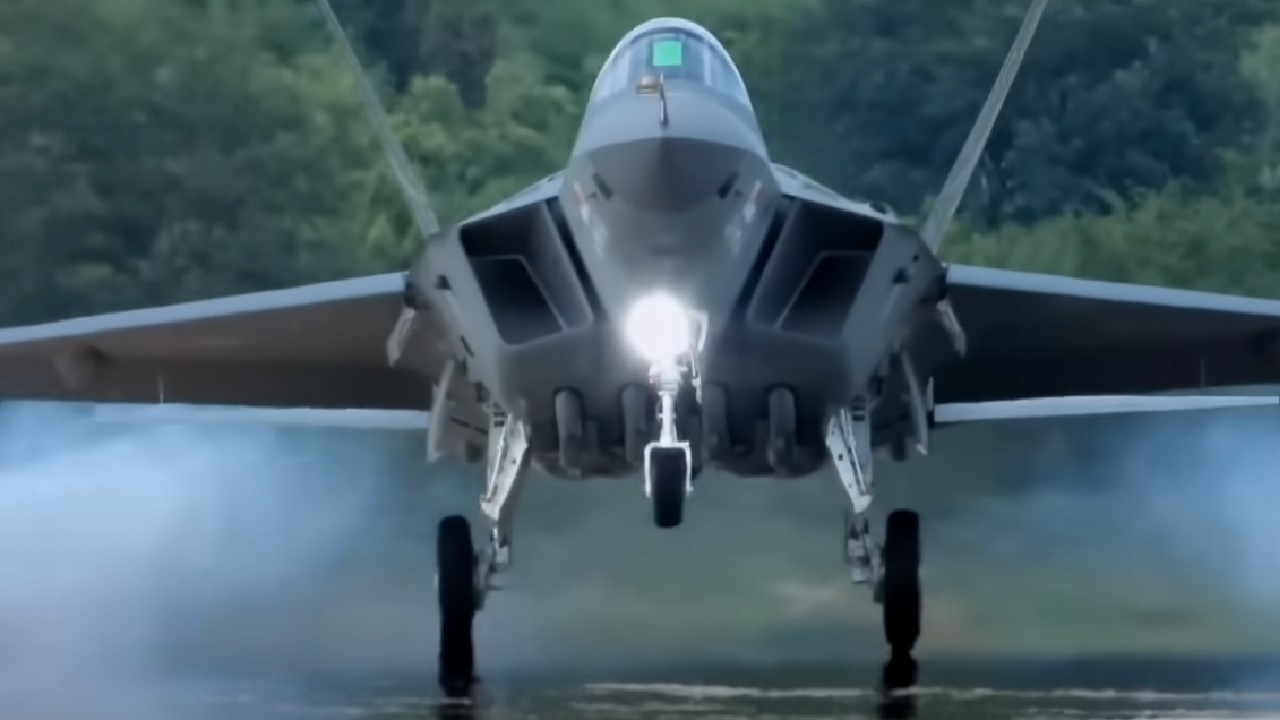The South Korean KF-21 Could Do More Than Deter North Korea: The Republic of Korea (South Korea) announced that it had successfully completed the maiden flight of its domestically-designed KF-21 “Borame” fighter jet earlier this week. The news of the successful first flight comes as Seoul has looked to bolster its defensive capabilities amid increasing threats from North Korea.
However, the more significant component of the story is how the jet could transform the South Korean arms industry.
The KF-21, which is being developed by Korea Aerospace Industries (KAI) as part of a $6.6 billion project to replace the Republic of Korea Air Force’s (RoKAR’s) aging fleet of F-4 and F-5 fighters, is also being touted as a “cheaper” alternative to the American-made Lockheed Martin F-35 Lighting II.
“The successful first flight of South Korea’s next-generation fighter KF-21 is a testament of Seoul’s continued advancements in its defense capabilities,” explained Sourabh Banik, defense analyst at international analytics firm GlobalData.
“The country’s technological prowess is more evident from the remarkable pace at which Korea Aerospace Industries (KAI) was able to bring the fighter design from the drawing boards to first flight,” added Banik. “This makes South Korea only the second country in Asia, after China, to fly an indigenously developed stealth fighter. The flight test is also significant for Indonesia, which is funding 20 percent of the program cost and looks to induct this highly advanced aircraft into its future fleet.”
South Korea First
Current plans call for 40 Block 1 aircraft to be manufactured and integrated with Diehl Defense AIM-2000 (IRIS-T), Meteor, JDAM, LJDAM, and the locally developed KGGB guided bombs. In addition, the Block 1 models will also have full air-to-air combat capability and limited air-to-ground capability to attain initial operating qualifications.
Already KAI is looking ahead to the Block 2 version, which will also offer full air-to-ground capability. The RoKAR is expected to receive 80 of these variants, with the delivery of the Block 2 aircraft expected to begin in 2028. The timing would allow for the aircraft to reach full operational capability status.
“As the South Korean government, along with KAI, funded 80 percent of the program, it is likely that more KF-21s will be deployed within the ROK Air Force than any other country,” said Banik.
According to GlobalData’s report, Military Fixed-wing Aircraft Market Size and Trend Analysis, South Korea is expected to cumulatively spend $17.5 billion on acquiring various categories of military fixed-wing aircraft between 2022 and 2032, and the combat aircraft segment will account for 82 percent of that spending.
“These procurements are mainly geared towards developing deterrence capabilities against any unforeseen aggression from its neighbor in the north. Investment towards the development of stealth fighters will help Seoul to market the KF-21 to friendly countries that are looking to acquire similar capabilities,” Banik continued. “The ROK Air Force already operates Lockheed Martin’s fifth-generation fighter F-35, which will help the service to smoothly transition to the KF-21 when it’s inducted.”
While an advanced aircraft, the KF-21 isn’t actually meant to supersede the Lockheed Martin F-35, as the Borame lacks the stealth capabilities of the American-built aircraft. It carries weapons externally on its six underwings and four under-fuselage hardpoints.
There have been discussions, however, to develop a Block 3 variant, which could incorporate fifth-generation fighter standards, including stealth and joint operation capability, and an enlarged fuselage that could include an internal weapons bay, is currently being considered. That could also make it an affordable alternative to the F-35 for cash-strapped countries – such as Indonesia – that might only dream of operating a fifth-generation (or close proximity) fighter.
A Senior Editor for 1945, Peter Suciu is a Michigan-based writer who has contributed to more than four dozen magazines, newspapers and websites. He regularly writes about military hardware, firearms history, cybersecurity and international affairs. Peter is also a Contributing Writer for Forbes. You can follow him on Twitter: @PeterSuciu.

